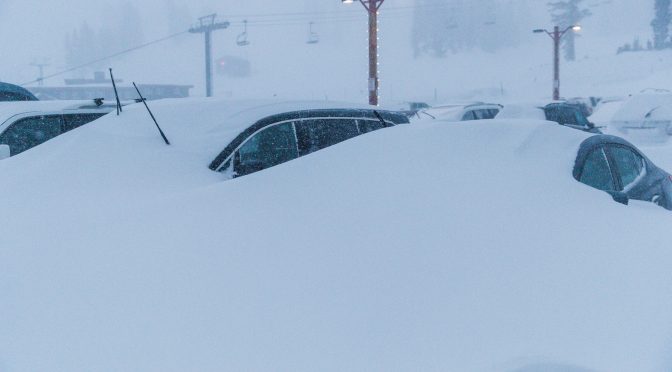Lake Tahoe, CA/NV – An incredible amount of moisture is pouring into the West Coast off the Pacific Ocean this week, leaving remarkable amounts of snow at Sierra Nevada ski resorts.
Up to seven feet of new snow has been reported at some resorts thus far, and forecasters are calling for additional accumulations of more than three to five feet heading into next week. In total, forecasts call for 25-30 inches of water equivalent at Mammoth Mountain from this storm cycle over the next 10 days. Although long-range forecasts should always be taken with a grain of salt, snow totals approaching 20 feet over the next 10 days are possible, especially at higher elevations.
“The storm door has been blown off its hinges with wave after wave of snow-laden storms lined up off the Pacific ready to deliver the goods to Lake Tahoe,” said Mike Pierce, President of Ski Lake Tahoe. “With season snowfall totals recently surpassing the 200-inch mark, Lake Tahoe is poised for a huge winter with dozens of toast-worthy powder days already in the books.”
“We’ve received an incredible amount of snow over the last few days, giving us a solid base that will offer fantastic skiing and snowboarding conditions long into the spring,” said Jon Slaughter, director of marketing and sales at Sugar Bowl Resort and Royal Gorge Cross Country, where nearly seven feet has already fallen during this storm cycle. Sugar Bowl has received 201 inches of snow season-to-date, with current base depths averaging 56-81 inches. “Forecasts are calling for additional winter storms to move through the region over the weekend and well into next week, which will make for an amazing Martin Luther King holiday weekend. We’re only five days into the month and we’re already experiencing the snowiest month of the season so far.”
Mt. Rose Ski Tahoe has measured over six feet of new snow from this storm cycle. Even at lower elevations, Homewood Mountain Resort on the shores of Lake Tahoe has received over seven feet of new snow this week, with 18 inches falling overnight last night at the summit, and 28 inches in a 24-hour period.











